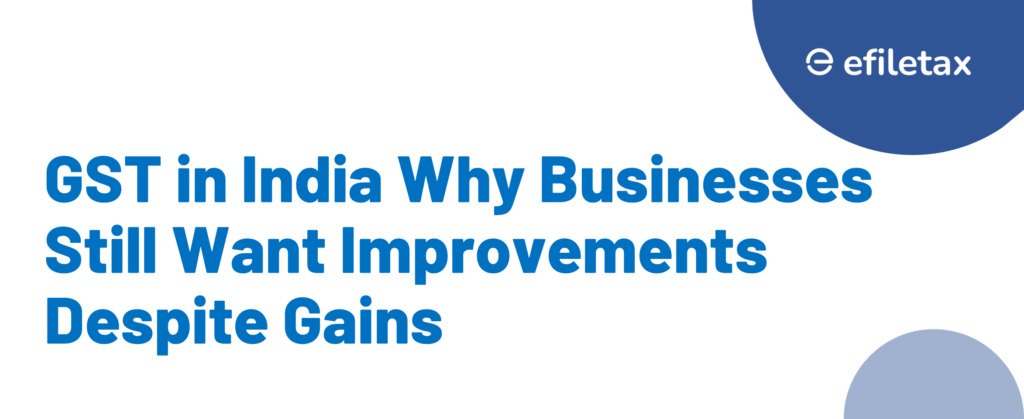
GST in India: Positive Experience, Scope for Improvement
Goods and Services Tax (GST in India) has simplified indirect taxes for millions of businesses. Yet, after almost 8 years, many taxpayers still face compliance challenges and procedural bottlenecks. This blog explains the positives, the pain points, and practical ways to manage GST better.
How GST Improved India’s Tax Landscape
Key positives since GST rollout (1st July 2017):
- Unified tax system: Replaced multiple indirect taxes (VAT, Excise, Service Tax).
- Easier interstate trade: No more entry tax or CST complications.
- Better input tax credit (ITC) mechanism: Reduced tax cascading.
- Online compliance: Filing, payments, and refunds on GST portal.
- Improved revenue collection: Average gross GST revenue crossed ₹1.7 lakh crore per month in 2025 (Source: PIB).
What Needs Improvement in GST in India
Despite the positive experience, industries highlight some pressing issues:
| Issue | Practical Impact |
|---|---|
| Frequent changes in rules | Businesses struggle to keep up |
| Complex ITC matching | Errors lead to notices & blocking of credits |
| Refund delays | Affects exporters & MSMEs |
| Multiple litigations | Conflicting AAR rulings & State interpretations |
| Technical glitches | Portal downtime during filing peak |
Recent Government Steps to Address Issues
- Amnesty Schemes: E.g., Section 128A CGST Act for pending returns & appeals.
- GSTAT Formation: As per Articles 323B & CGST Sections 109–114, GST Appellate Tribunal (GSTAT) is notified to reduce litigation backlog.
- Automation & AI Tools: To catch fake invoices and reduce tax evasion.
Reference: CBIC updates & Budget 2025 announcements.
Expert Tip: Be Proactive with Compliance
“Timely reconciling GSTR-2B with purchase records every month avoids ITC mismatches and interest demands. Use automation tools or consult your CA,” says Rajesh Mehta, Senior GST Consultant.
How Businesses Can Handle GST Challenges
Here’s a step-by-step guide to navigate GST better:
✅ Keep track of notifications: Check CBIC regularly.
✅ Automate reconciliations: Use reliable GST software.
✅ File returns early: Avoid last-minute portal errors.
✅ Maintain proper documents: For faster refunds and audit readiness.
✅ Seek expert help: Consult a GST practitioner for complex issues.
FAQ: GST in India
Q1: Is GST in India better than VAT?
Yes. GST replaced VAT, excise, and service tax, bringing a single tax with uniform rates.
Q2: How to claim input tax credit easily?
Match GSTR-2B with purchase invoices monthly and ensure suppliers file timely.
Q3: Is GST refund automatic?
Partly automated. For exports, apply with relevant documents under Section 54 of CGST Act.
Summary
GST in India simplified indirect taxes but still poses challenges like complex ITC rules and refund delays. Regular updates, automation, and expert advice help businesses stay compliant and avoid penalties.
Closing
GST in India is a work in progress — overall positive but needs smoother compliance. For hassle-free GST filing, registration, or audit support, connect with Efiletax experts today.